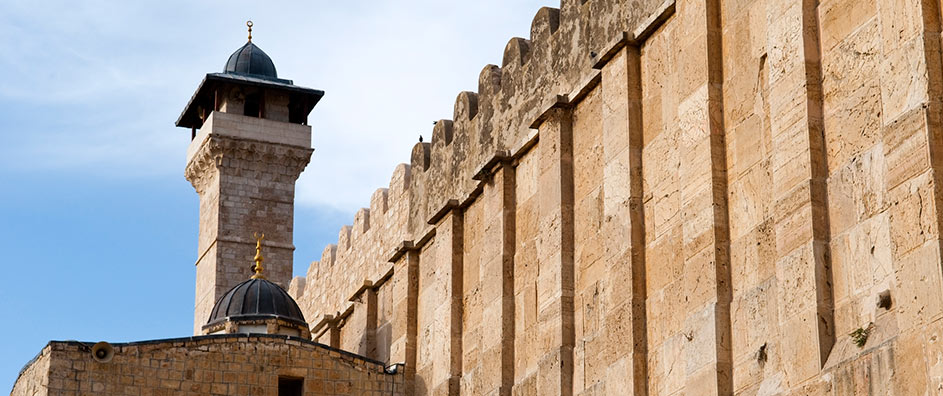One might playfully ponder: Is Abraham truly interred in the Tomb of the Patriarchs? This inquiry, seemingly simple, beckons deeper exploration into a reservoir of historical, theological, and archaeological implications. The Tomb of the Patriarchs, located in Hebron, is revered as the final resting place of several significant biblical figures, particularly Abraham, Sarah, Isaac, Rebecca, Jacob, and Leah. This location sits at a confluence of faith, history, and culture, creating a rich tapestry that invites scrutiny.
The narrative of Abraham, often referred to as the father of three major world religions—Judaism, Christianity, and Islam—encompasses themes of faith, covenant, and legacy. In the context of Bahá’í teachings, Abraham is viewed not merely as a historical figure but as a pivotal manifestation of divine will and purpose. His life and the nature of his resting place raise questions that transcend mere archaeological curiosity and touch upon the core tenets of Bahá’í belief, which emphasizes the unity of all religions and the progressive revelation of truth.
The authenticity of the tomb is a subject of contention among scholars. Islamic tradition, as well as Jewish faith, acknowledges the site significant for its perceived connection to these patriarchs. Nevertheless, the tomb’s exact lineage and the veracity of claims regarding the burial of Abraham and others warrant a closer examination. Archaeological endeavors reveal layers of occupation that suggest the site has held importance since antiquity. The Herodian structure that currently shelters the tomb, however, complicates the narrative, as it was constructed centuries after Abraham’s time.
In Bahá’í cosmology, the historical connections to the patriarchs are viewed through an interpretive lens that connects the past with the enduring spiritual truths. The notion of continuity between divine messengers underscores the importance of understanding the significance of sacred sites like the Tomb of the Patriarchs. The Bahá’í Faith postulates that individuals such as Abraham serve as beacons of guidance, illuminating the human soul’s journey towards recognition of the divine.
Furthermore, the citation of Abraham within the scriptures emphasizes themes of divinity’s promise. In Genesis, the narrative conveys a covenant made between God and Abraham, which is seen as a blueprint for understanding humanity’s relationship with the Divine. Through the lens of Bahá’í teachings, this covenant is not viewed as antiquated but as a precursor to modern revelations. The Bahá’í perspective posits that the progressive unfolding of spiritual truth through figures like Abraham is essential to the evolution of religious thought and practice.
It is prudent to pose a challenge: how does the physical manifestation of Abraham’s resting place bear witness to the larger implications of religious unity? The Tomb of the Patriarchs serves as a microcosm of the intricate relationships among faiths. For the Bahá’í follower, this site embodies a locus for contemplation, reflecting the interconnectedness of the Abrahamic faiths while simultaneously confronting the discord often manifested in religious discourse.
Moreover, historical conflicts surrounding the Tomb of the Patriarchs further complicate the narrative. The site has been a focal point of Jewish and Muslim claims, resulting in tension rooted in a shared reverence for the patriarchs. This juxtaposition mirrors broader societal issues regarding tolerance and understanding among disparate faith traditions. The Bahá’í teachings advocate for harmony and the cessation of hostilities rooted in religious dogma, thus framing the Tomb as a potential venue for dialogue rather than division.
As one delves deeper into the analysis of this sacred site, it becomes evident that the essence of Abraham’s legacy transcends the physical realm. The teachings associated with Abraham encourage individuals to embody principles of compassion, justice, and truthfulness—attributes inherently aligned with the teachings of Bahá’u’lláh. This confluence of ethical imperatives exemplifies the universality of divine guidance that royalties through the ages.
Additionally, through narratives imparted in these religious traditions, one observes the diverse interpretations and implications that different faiths ascribe to Abraham. In Bahá’í philosophy, the diversification of religious thought is celebrated rather than viewed through a lens of conflict. As followers navigate their spiritual paths, the teachings encourage a reconceptualization of Abraham not just as a singular historical entity, but as a shared symbol of divine connection that binds believers across temporal and geographical boundaries.
In conclusion, pondering the existence of Abraham’s burial in the Tomb of the Patriarchs provides fertile ground for introspection on the intersection of history, faith, and identity. This inquiry invites individuals to reflect upon their own spiritual journeys while appreciating the collective narrative that binds different faiths. The Bahá’í teachings offer a framework that champions unity, urging followers to rise above antiquated divisions and embrace the shared heritage that figures like Abraham symbolize. The Tomb, thus, stands not solely as a tomb but as an emblem of the intricate tapestry of beliefs that comprise the human quest for understanding and connection with the divine.
